Phantom Breaker never left Japan. Even though there were plans to localize the Xbox 360-only fighting game, the plans fell through after a couple of years and several missed release dates. The game received an upgrade for arcades before getting another version for the home market as Phantom Breaker: Extra on the Xbox 360 and PS3. A spin-off of the game, Phantom Breaker: Battle Grounds, made it around the world to mildly positive results, but it was a brawler instead of a pure on-on-one fighter. We are finally seeing the release of the series outside of Japan in fighting game form with Phantom Breaker: Omnia for multiple platforms, including the Nintendo Switch.
To be clear, Omnia isn't a completely new title but more of a tweaked version of Phantom Breaker: Extra. That likely won't matter to the majority of players, but it is something to note for those who did import the title roughly nine years ago. For everyone else, the game mechanics fall in line with most of the other smaller anime fighters on the market. The game uses four attack buttons, with three designated for light, medium, and heavy attacks and one for special attacks. Unlike other fighting games, the special attacks are similar to Super Smash Bros. in that you hit the special attack button in conjunction with a direction and sometimes another button to deliver your variety of moves. While most of the moves can be executed at any time, a few of them are completely reliant on you having filled one or more burst gauge bars.
The signature mechanic lies in the three fighting styles that you can select for each fighter. Quick Style gives you faster characters and the ability to double-jump. You can also execute simple button combos and quickly replenish your burst gauge at the expense of a lower health bar. Pick Hard Style, and you lose out on all but one of the simple button combos, but you do gain an exclusive move with Back and Medium Attack. You have more health but lose mobility in the process. Omnia Style is the middle ground of the two extremes and is the replacement for the previous game's Extra style, so there's no manual toggling between styles. You gain Quick Style's one-button combos, but you lose out on some of the other abilities granted by the other styles.
On paper, this sounds both simple and deep. The various systems do well in terms of acting as counters to one another, and the fighting is quite fast paced. However, the various systems lose their effectiveness once you discover that it takes far too many hits to knock out your opponent. Even if you choose Hard Style and do nothing but heavy attacks, the opponent's health meter won't move by much, while light attacks cause that health meter to only drain by slivers. Go over to Quick or Omnia Styles, and fights tend to go down to the wire because even special moves won't make a significant dent in the health meter.
It doesn't help that the roster isn't too inspiring. The 20 fighters on the roster consist of plenty of anime stereotypes from idols to maids and schoolgirls, but there was some care taken to keep them modestly dressed for a fight. Even after learning about their backgrounds and seeing the weapons they yield, no one stands out as favorites or even memorable. The exceptions are the guest characters Kurisu from Steins;Gate and Rimi from Chaos;Head, both of whom appeared in Phantom Breaker: Extra.
The game modes are expected from an anime fighting game, with a few of them displaying some interesting quirks. There's a gallery mode, where achieving both major and minor milestones gets you still images of all of the characters, but there's no easy way to switch to new images when you're already viewing one up close. For solo players, the side modes include a score attack, time attack, and endless mode, complete with online leaderboards.
Arcade mode is also available for solo players, but the game's bigger focus is on the story mode. Fourteen characters are playable in this mode, with their storylines ripped from both Phantom Breaker and Phantom Extra, so don't expect new lore if you've imported those games before. The cut scenes do little to explain what's going on, and the visual novel scenes don't sport much in the way of poses or different facial expressions. It's functional, and that's about it. In both modes, be prepared to turn down the difficulty if you want to make some progress; the AI opponent is prone to getting you in long cycle combos, causing more frustration than enjoyment.
Training mode has a little twist: You can manually record what your opponent's actions will be for 12 seconds and have a chance to fight against that. You can record up to five different sequences per fighter and select between three different moods. It makes for a perfect practice tool that's far deeper than other games. The only drawback is that the mode isn't endless, as draining your sparring partner's health means being reset to starting positions with all meters reset.
The game features an online mode with both Player and Ranked modes, but due to the lack of cross-play support, we weren't able to find a match during the review period. For a fighting game on the Switch that isn't a big name, this means that you shouldn't expect much of a community. Also distressing is the lack of rollback netcode, so while the online performance might be OK, the lack of that failsafe is disappointing.
Since Omnia is a tweaked port of Extra, don't expect it to be graphically remastered. Even with that in mind, the graphics aren't up to snuff when compared to similar titles in the genre during the time of its original release. The animations are decent, but the characters look small, including the lone behemoth character when he stands upright for his winning pose. The backgrounds sport some nice day and night versions, and having different locations per round is a nice touch, but it doesn't hide the fact that the environments feel lifeless because no other characters are there or no other animations are playing. The special effects for moves look rather muted to the point that having the larger character animation present when executing big super moves is the only real highlight. It all moves at a solid 60fps, but it isn't a showcase title for a 2D fighter on the system. While the main menu is easy to navigate, the same can't be said for the difficult-to-see character selection screen, since the selection border is so light and the player icon is so small.
The audio is mostly fine. The music leans more on the electronic and typical anime stuff, which works fine for a fighting game. The sound effects are good enough but lack oomph when compared to other fighters. The voice work in English and Japanese sounds quite nice, but the Japanese vocal track is only partially done. It's fine in the Story cut scenes and during fights, but the opening movie and menus have English voices; it's something to keep in mind if you want to hear the opening song in Japanese.
Phantom Breaker: Omnia isn't a bad fighting game. The fighting seems deep at first but quickly turns chaotic with plenty of moves that don't look like they connect and a roster that looks more generic than impressive. The presentation is OK with decent music and graphics that look a touch underwhelming. The modes are numerous, but those who will want to play online will be disappointed at the lack of rollback netcode. The Switch is already blessed with a bevy of solid fighting games, so the only reason to grab this one is if you really want all of the fighting games that the system has to offer.
Score: 6.5/10
More articles about Phantom Breaker: Omnia



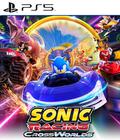
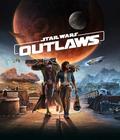
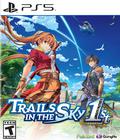
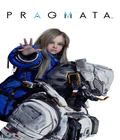
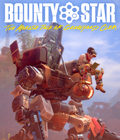
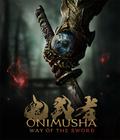


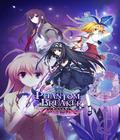 Phantom Breaker: Omnia is a fast-paced 2-D anime fighting game that features 20 unique characters, pitted against one another to make their greatest wishes come true.
Phantom Breaker: Omnia is a fast-paced 2-D anime fighting game that features 20 unique characters, pitted against one another to make their greatest wishes come true.















